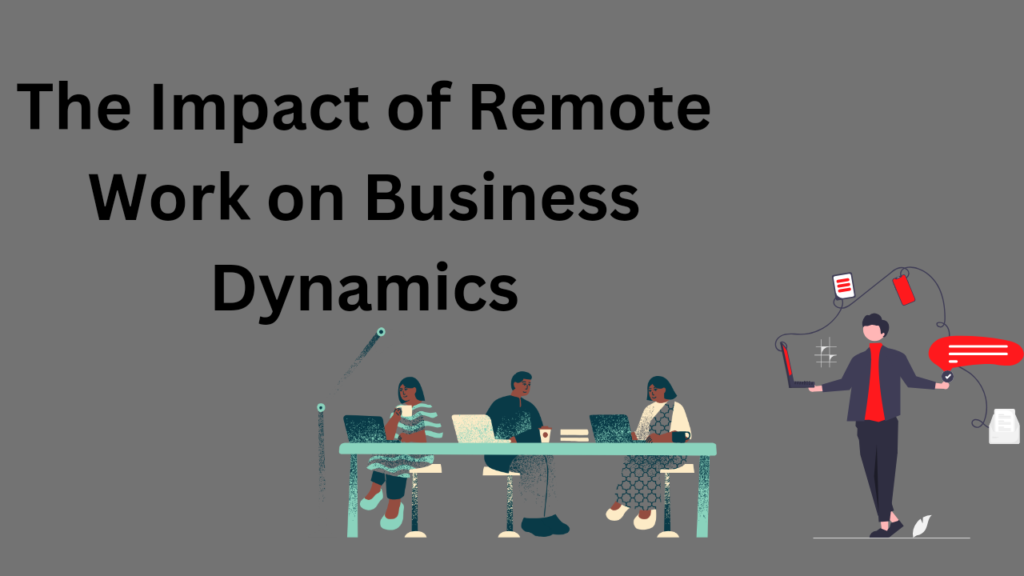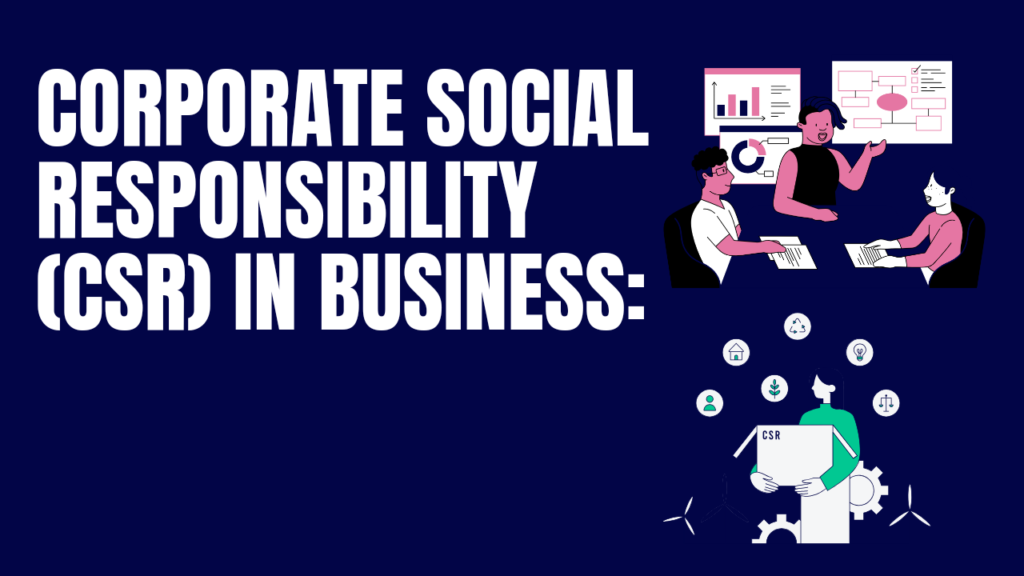THE IMPACT OF REMOTE WORK ON BUSINESS DYNAMICS

The impact of remote work on business dynamics has been profound, ushering in a transformative era with both challenges and opportunities.
1. Flexibility and Productivity:
- Remote work has granted employees greater flexibility, enabling them to tailor their work environments to enhance productivity.
- Businesses have witnessed shifts in productivity patterns, with some experiencing increased efficiency, while others grapple with new challenges related to communication and collaboration.
2. Technology’s Role:
- The reliance on digital communication tools and collaboration platforms has surged, reshaping how businesses operate.
- Companies that have embraced technology seamlessly are often better positioned to navigate the complexities of remote work.
3. Organizational Culture and Employee Engagement:
- Employee engagement strategies have evolved, emphasizing the importance of virtual team-building activities and consistent communication.
4. Talent Acquisition and Global Reach:
- Remote work has expanded the pool of potential talent beyond geographic constraints.
- Businesses can now tap into a diverse and global workforce, fostering innovation and different perspectives.
5. Challenges in Communication and Collaboration:
- Despite technological advances, remote work has highlighted challenges in effective communication and collaboration.
- Companies need to adopt strategies to bridge the gap and ensure teams remain cohesive.
6. Well-being and Work-Life Balance:
- Remote work has raised awareness of employee well-being and the importance of maintaining a healthy work-life balance.
- Businesses are adapting by implementing policies and initiatives to support the mental health and overall well-being of their remote workforce.
7. Evolution of Leadership Practices:
- Leadership in a remote work environment requires a shift towards trust-based management and outcome-oriented performance evaluation.
- Leaders are exploring new ways to inspire and lead teams virtually.
In conclusion, the impact of remote work on business dynamics is a multifaceted phenomenon, shaping the future of work in ways that demand adaptability
The impact of remote work on business dynamics is profound and multifaceted. Here are key aspects to consider:
- Organizational Structure:
- Traditional hierarchies may evolve as remote work often necessitates flatter structures.
- Decentralized teams and virtual collaboration platforms reshape how companies organize and coordinate activities.
- Employee Productivity:
- Remote work can enhance productivity due to reduced commute times and personalized work environments.
- Challenges like potential distractions and the need for self-discipline may affect productivity levels differently for each individual.
- Corporate Culture:
- Maintaining a strong company culture becomes challenging with dispersed teams.
- Companies must find innovative ways to foster a sense of belonging and shared values among remote employees.
- Technology’s Role:
- The adoption of advanced communication and collaboration tools becomes essential for seamless remote work.
- Companies investing in cybersecurity measures to protect sensitive information transmitted in virtual environments.
- Challenges and Opportunities:
- Challenges include potential feelings of isolation, communication barriers, and the need for effective remote management.
- Opportunities arise in accessing a global talent pool, reducing office expenses, and promoting a flexible work environment.
- Employee Well-Being:
- Remote work influences the work-life balance, with some experiencing improved flexibility and others struggling to set boundaries.
- Companies need to prioritize mental health support and create policies that promote a healthy work-life equilibrium.
- Long-Term Business Strategies:
- Remote work may prompt companies to reevaluate their long-term strategies, including the necessity of physical office spaces.
- Flexibility in work arrangements could become a key differentiator for attracting and retaining talent.
- Leadership and Management Practices:
- Remote leadership requires a shift towards outcome-based management rather than traditional supervision.
- Leaders must focus on trust-building, clear communication, and fostering a positive remote work culture.
In conclusion, the impact of remote work on business dynamics is a complex interplay of technological, cultural, and organizational changes, requiring companies to adapt and innovate to thrive in this evolving landscape.
The impact of remote work on business dynamics has been profound, ushering in a transformative era in how companies operate. Several key aspects illustrate the far-reaching effects:
- Organizational Structure:
- Traditional hierarchical structures have evolved to accommodate decentralized teams.
- Companies increasingly embrace flatter organizational hierarchies, fostering a more collaborative and agile work environment.
- Employee Productivity:
- Remote work has challenged traditional notions of productivity, emphasizing outcomes over hours spent in the office.
- Technology tools and project management platforms have become integral in maintaining and measuring productivity in a virtual setting.
- Corporate Culture:
- Building and maintaining a cohesive corporate culture has become a significant challenge in a dispersed workforce.
- Companies are exploring innovative ways to foster a sense of community through virtual team-building activities and communication channels.
- Technology Facilitation:
- The accelerated adoption of digital tools has enabled seamless communication and collaboration.
- Cloud computing, video conferencing, and collaborative platforms have become indispensable for remote work setups.
- Challenges and Opportunities:
- Remote work has presented challenges such as potential feelings of isolation, difficulty in monitoring employee well-being, and maintaining work-life balance.
- However, it also opens opportunities for a broader talent pool, reduced operational costs, and increased flexibility for employees.
- Long-Term Business Strategies:
- Companies are reevaluating their long-term strategies, considering a hybrid model that combines remote and in-office work.
- The shift towards digital transformation has become a strategic imperative to ensure adaptability and resilience.
- Employee Well-being:
- Remote work has emphasized the importance of employee well-being, prompting businesses to prioritize mental health support and flexible work arrangements.
- Companies are investing in initiatives that promote a healthy work-life balance and foster a positive remote work experience.
In conclusion, the impact of remote work on business dynamics is multifaceted, reshaping the way organizations operate, collaborate, and strategize for the future. It is a dynamic shift that requires continuous adaptation and innovation to thrive in the evolving business landscape.
The impact of remote work on business dynamics has been profound, reshaping traditional workplace structures and influencing various aspects of organizational functioning.






